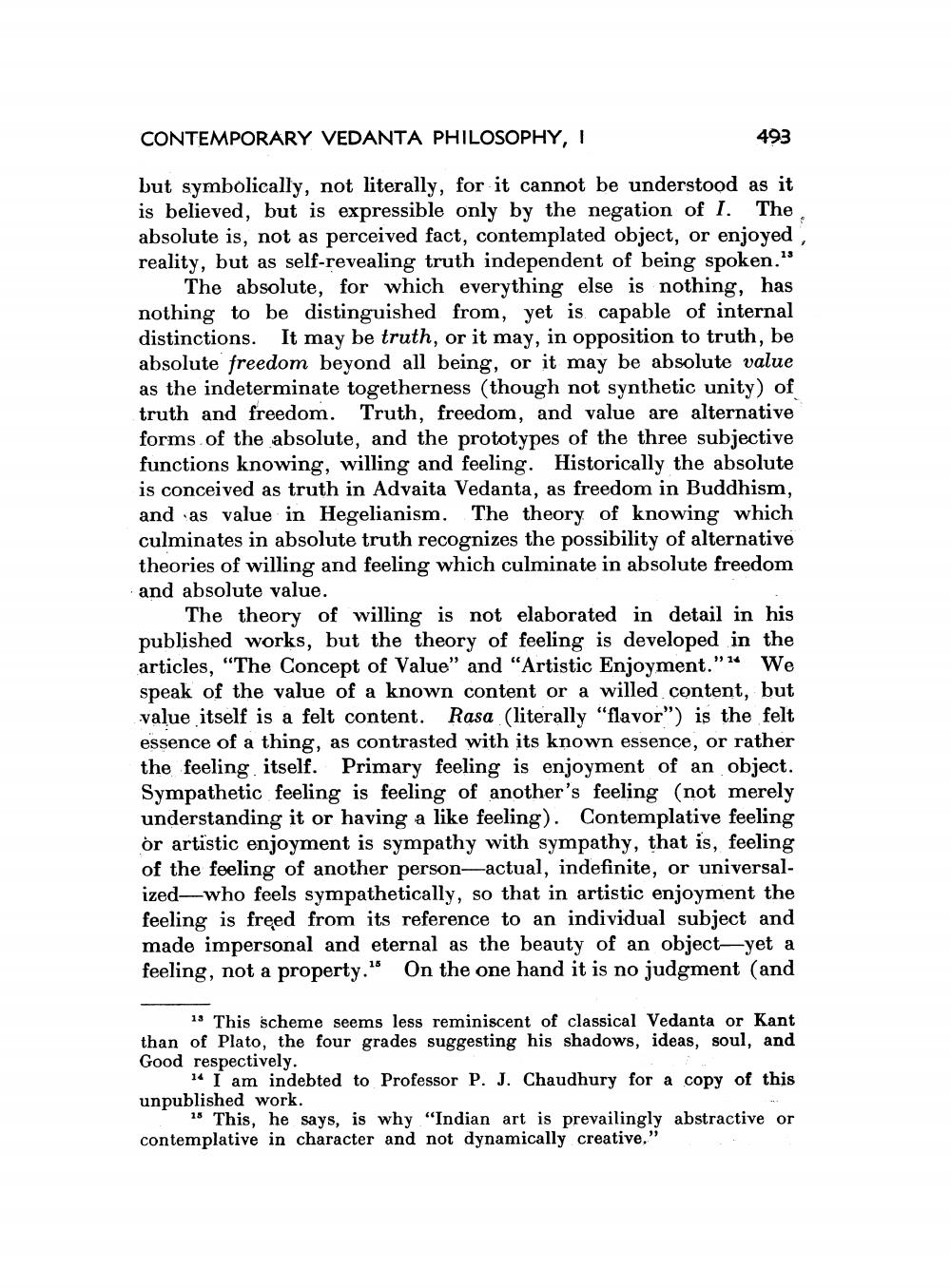Book Title: Contemporary Vedanta Philosophy 01 Author(s): George Burch Publisher: George Burch View full book textPage 9
________________ CONTEMPORARY VEDANTA PHILOSOPHY, I 493 but symbolically, not literally, for it cannot be understood as it is believed, but is expressible only by the negation of I. The absolute is, not as perceived fact, contemplated object, or enjoyed, reality, but as self-revealing truth independent of being spoken." The absolute, for which everything else is nothing, has nothing to be distinguished from, yet is capable of internal distinctions. It may be truth, or it may, in opposition to truth, be absolute freedom beyond all being, or it may be absolute value as the indeterminate togetherness (though not synthetic unity) of truth and freedom. Truth, freedom, and value are alternative forms of the absolute, and the prototypes of the three subjective functions knowing, willing and feeling. Historically the absolute is conceived as truth in Advaita Vedanta, as freedom in Buddhism, and as value in Hegelianism. The theory of knowing which culminates in absolute truth recognizes the possibility of alternative theories of willing and feeling which culminate in absolute freedom and absolute value. The theory of willing is not elaborated in detail in his published works, but the theory of feeling is developed in the articles, "The Concept of Value" and "Artistic Enjoyment."" We speak of the value of a known content or a willed content, but value itself is a felt content. Rasa (literally "flavor") is the felt essence of a thing, as contrasted with its known essence, or rather the feeling itself. Primary feeling is enjoyment of an object. Sympathetic feeling is feeling of another's feeling (not merely understanding it or having a like feeling). Contemplative feeling or artistic enjoyment is sympathy with sympathy, that is, feeling of the feeling of another person-actual, indefinite, or universalized-who feels sympathetically, so that in artistic enjoyment the feeling is freed from its reference to an individual subject and made impersonal and eternal as the beauty of an object-yet a feeling, not a property." On the one hand it is no judgment (and 13 This scheme seems less reminiscent of classical Vedanta or Kant than of Plato, the four grades suggesting his shadows, ideas, soul, and Good respectively. 14 I am indebted to Professor P. J. Chaudhury for a copy of this unpublished work. 15 This, he says, is why "Indian art is prevailingly abstractive or contemplative in character and not dynamically creative."Page Navigation
1 ... 7 8 9 10 11 12 13 14 15 16 17 18 19 20
